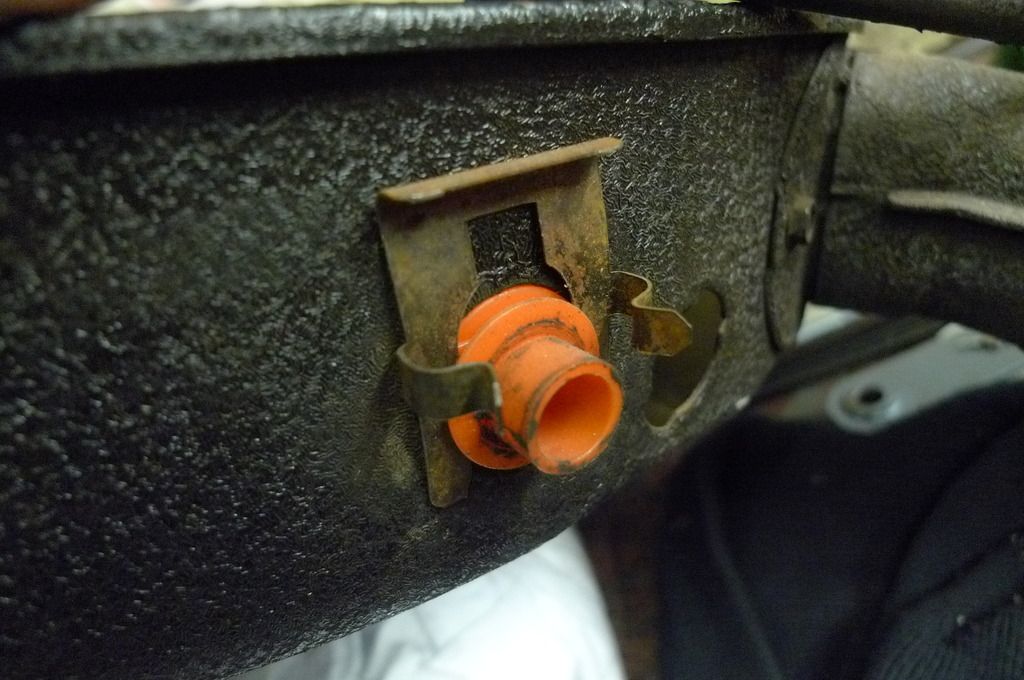Also to the right of the orange plastic Fabrication is another hole?? can anyone shed some light please.
Can anyone identify what it is and where I could get one from please.

Replies sorted oldest to newest
quote:Originally posted by George P:
the little orange part should have a cheap little plastic pocket (with a filter element stuffed in the pocket) on the opposite side of the air cleaner housing. That strange "clip" holds the plastic pocket (with filter element) in place, while also clipping a black plastic elbow (i.e. holding that elbow to the orange piece). The elbow allows connection of a hose to the valve cover. The valve cover has another 45 degree black plastic elbow attached to it, via a large rubber grommet. This may or may not be attached via the oil filler cap, depending upon how the valve covers are oriented.
Dennis' pictures shows it all quite elegantly. Pictures are always worth 1000 words.
Not much effort was put into any of this by Ford, the parts were not well made, and the connections were a source of oil vapor and grime on the engine. Federally mandated emission regulations had only begun in 1968. Its a strange story, the Auto corporations hated being told to comply with federal clean-air regulations, yet they had willingly complied with the concern to remove lead from gasoline. On the other hand the oil companies didn't like being forced to remove lead from gasoline. It was a crazy era in that respect.
The hole in the air cleaner housing next to where the orange part is sticking out should have a pot metal "nipple" screwed into it. That nipple allows attachment of a foil covered paper hose which connects the air cleaner housing to the charcoal canister mounted in the forward right corner of the engine compartment. The charcoal canister is a round blue assembly. It collected fuel vapors 45 years ago. Today its non-functional.
Peter I'm in a story telling mood. Forgive an old man.
To pass federal emissions regulations a car had to have zero measurable gasoline emissions (vapors) while it sat in an air tight room for a day. So cars had to have a means for collecting evaporative emissions from the carburetor and the fuel tank while it sat in that air tight room. Hence the charcoal canister collected those evaporative emissions from the carburetor fuel bowls and the fuel tank. Then, when the engine was started the vapors that had collected in the charcoal canister were "sucked" out of the canister and into the air filter assembly and passed through the engine.
quote:Originally posted by sjdennis:
[QUOTE]Originally posted by George P:
the little orange part should have a cheap little plastic pocket (with a filter element stuffed in the pocket) on the opposite side of the air cleaner housing. That strange "clip" holds the plastic pocket (with filter element) in place, while also clipping a black plastic elbow (i.e. holding that elbow to the orange piece). The elbow allows connection of a hose to the valve cover. The valve cover has another 45 degree black plastic elbow attached to it, via a large rubber grommet. This may or may not be attached via the oil filler cap, depending upon how the valve covers are oriented.
Here is a picture inside the air cleaner: